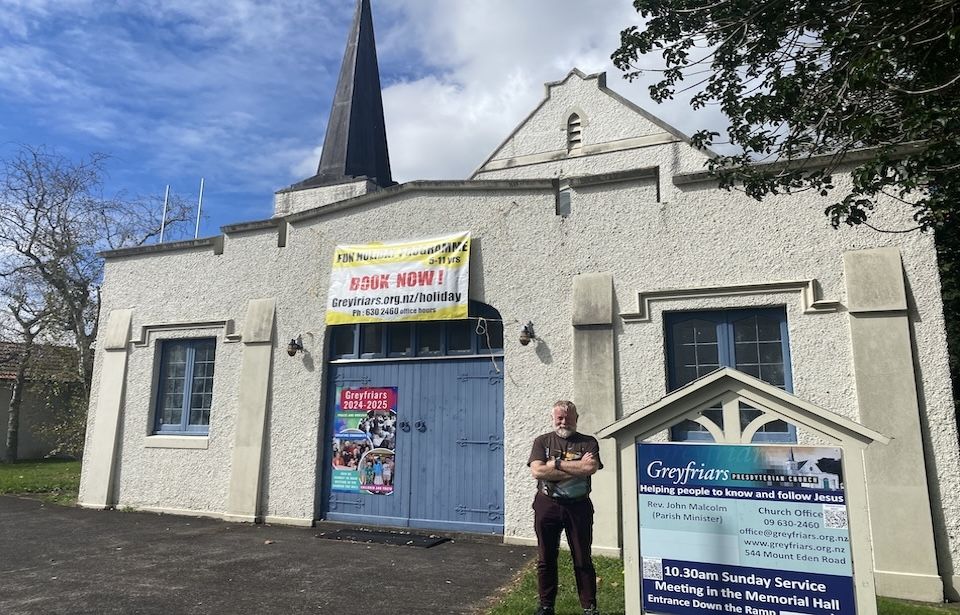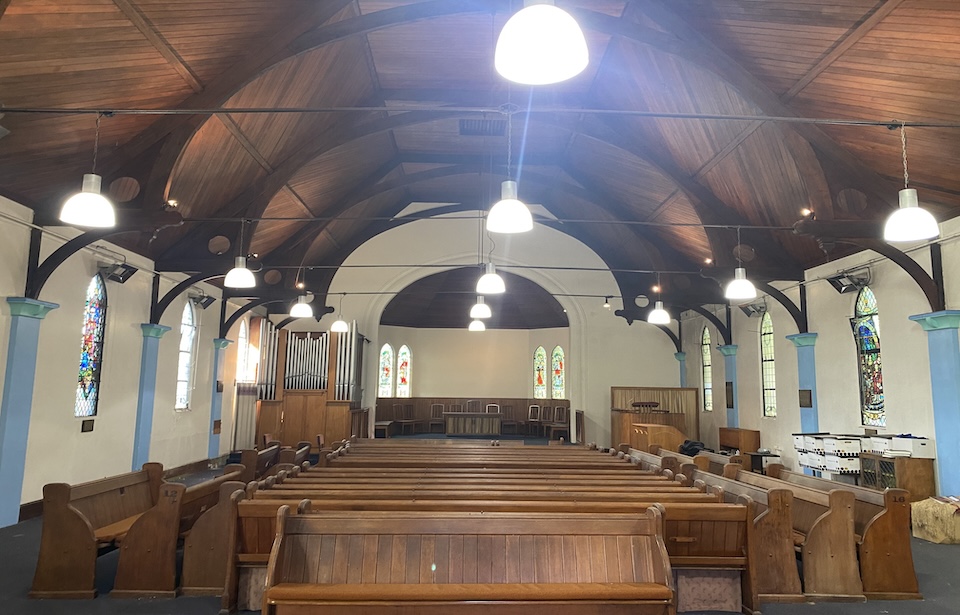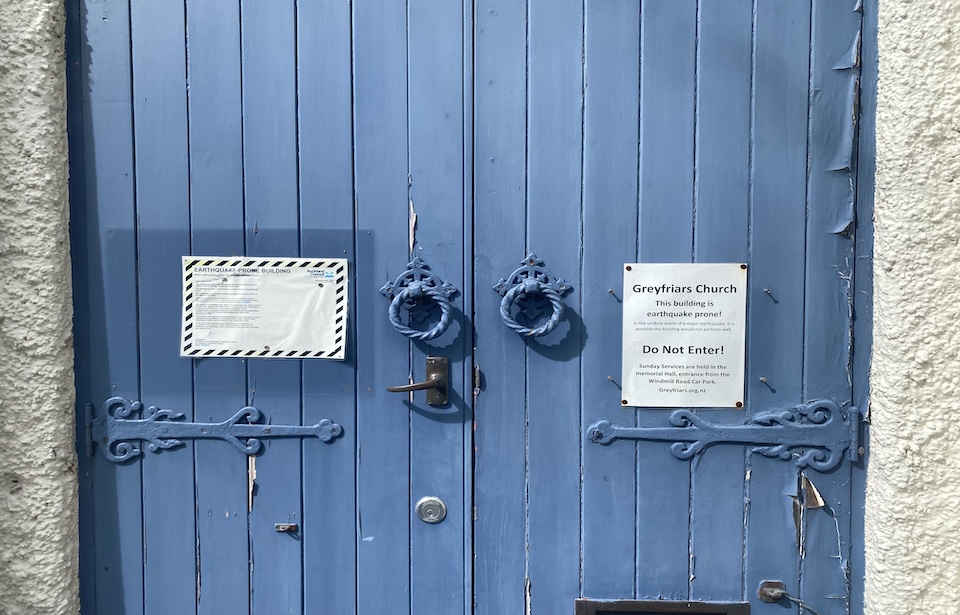Historic church building left empty for over a decade due to funding issues
• April 10, 2024

Greyfriars church was built in 1916, but hasn’t held a service in its chapel since 2011. Photo: Ben McQueen
The Greyfriars Presbyterian Church building has been closed for over a decade due to earthquake risk, with its members struggling to find funding for the strengthening work.
Mike Maguire, property manager of the Mount Eden church, says that costly seismic strengthening would mean sacrificing their sister church in Epsom, which is also a historic building.
“The only way that we can make this church pay for a multi-million-dollar project here is to sell the church in Epsom, and once you’ve sold the church in Epsom you can’t un-sell it.”
The congregation has been using the adjacent hall for their services over the last few years, but Maguire says their inability to use their chapel has limited some key church operations.
“We used to have a youth hall underneath and that was very popular for a lot of youth group activities, but that’s all been abandoned… that’s a bit of a blow.”
 Churchgoers haven’t sat in the chapel’s pews for many years. Photo: Ben McQueen
Churchgoers haven’t sat in the chapel’s pews for many years. Photo: Ben McQueen
Maguire says that the sudden closure of the church building came as they were about to complete renovations on the youth hall.
“We couldn’t even do the last coat of paint and the last bit of gib board, we had to abandon it, so that was heartbreaking.”
The introduction of new earthquake regulations in the wake of the 2011 Christchurch Earthquake meant historical buildings across the motu were subjected to more stringent structural assessments.
The Presbyterian Church of New Zealand also introduced its own national policy, requiring church buildings to close indefinitely if they were found to be earthquake prone.
Maguire is aware of many other historic church buildings across Auckland that are also lying empty – their communities unable to raise the necessary funds to undergo earthquake strengthening.
 Many earthquake prone churches have had to close their doors to their own congregation. Photo: Ben McQueen
Many earthquake prone churches have had to close their doors to their own congregation. Photo: Ben McQueen
Advocate for culturally significant buildings Dr Stacy Vallis says many church communities seem to have been left to foot the bill for upgrading their old buildings.
The lecturer in AUT’s School of Future Environments and chair of the international advocacy NGO for the protection of culturally significant heritage sites, ICOMOS Aotearoa New Zealand, understands the situation is complex and expensive.
“It highlights the fact that perhaps there are gaps in them receiving the type of support that’s needed.”
She thinks that the solution lies in greater collaboration between the regulatory bodies and the church communities.
“More dialogue is needed between these different stakeholders – being these local groups and both our local and central government.”
The issue is not exclusive to churches, and Dr Vallis believes more public consultation is needed to determine how to move forward with the hundreds of heritage buildings in a similar position.
“Ultimately it’s not a case of just rebuilding or retrofitting an old building because it’s a pretty building, but it’s a question of – what is the ongoing use or relevance to the public at large?”
Watch: Dr Stacy Vallis’ thoughts on the importance of heritage buildings.

Whakatairanga ka tika, whakamaua ngaa mita
AISHA CAMPBELL (NGĀTI RUANUI, NGĀ RAURU, NGĀ RUAHINE, TE ATIAWA, TARANAKI) • October 28, 2025

Supporters hope new council will save Western Springs Speedway
Savannah Lendich Jonkers • October 8, 2025


Whakatairanga ka tika, whakamaua ngaa mita
AISHA CAMPBELL (NGĀTI RUANUI, NGĀ RAURU, NGĀ RUAHINE, TE ATIAWA, TARANAKI) • October 28, 2025

Supporters hope new council will save Western Springs Speedway
Savannah Lendich Jonkers • October 8, 2025
